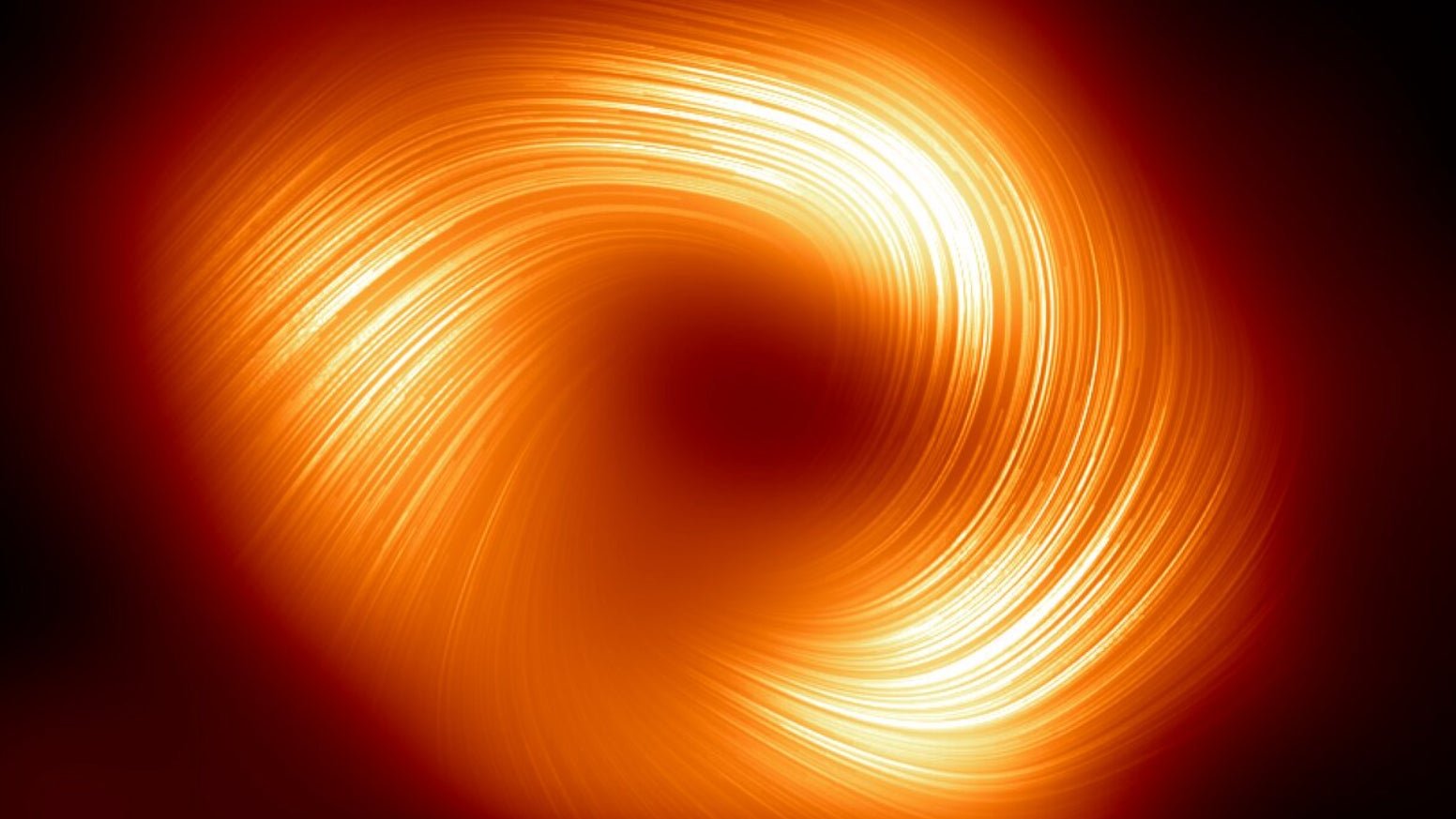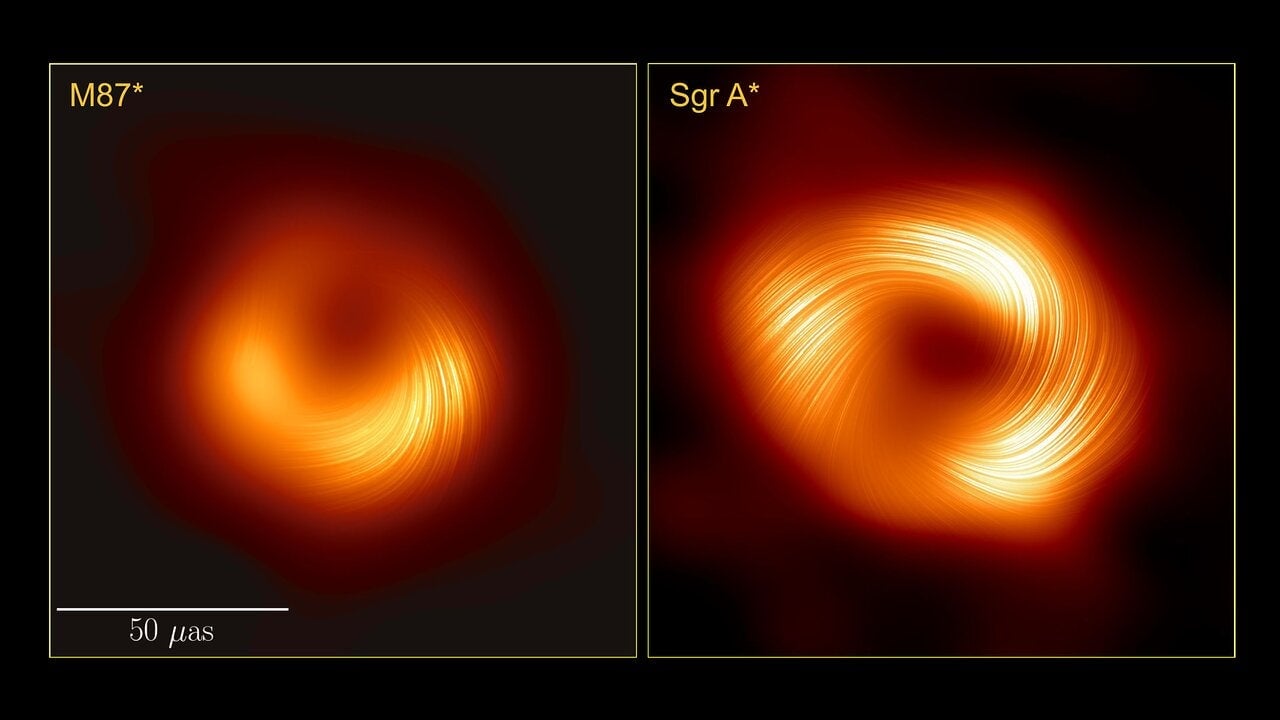Check out the magnetic field of the Milky Way's supermassive black hole in this new image
The magnetic field lines of our galaxy's central black hole are answering some questions about black hole structure

A new image of our galaxy’s central black hole reveals the magnetic field surrounding the object in polarized light. The image reveals how gas and superheated matter in the immediate vicinity of the black hole move around it. But aside from that, it’s a great way to visualize the extreme physics happening at the center of our galaxy.
Suggested Reading
The Milky Way’s supermassive black hole is named Sagittarius A*. It’s about four million times the mass of the Sun and was first imaged by the Event Horizon Telescope (EHT) Collaboration in 2022. The collaboration imaged its first black hole three years earlier, an even more massive behemoth at the heart of the M87 galaxy (it’s a whopper at 6.5-billion-solar-masses).
Related Content
Famously, nothing—not even light—can escape the event horizon of a black hole, so these images really show the black holes’ shadows; that is, the regions of space where the black holes reside. But the immediate environment around a black hole is a different story. These regions emit an extraordinary range of brightness, spanning from radio waves to X-rays. This luminosity is due to the heating of matter and gas that surround black holes and make up their accretion disks, resulting in the emission of light across various wavelengths.
Some of this light is polarized—its wavelengths are oscillating in a specific way that reveals aspects of the physical universe that our naked eyes cannot see. In two papers published today in The Astrophysical Journal Letters, scientists affiliated with the EHT revealed an image of Sagittarius A* that showcases the magnetic fields surrounding the black hole, as revealed by polarized light from its accretion disc.
The first paper includes the image and an overview of the team’s observations and data, while the second paper unpacks the physical structure of the ring and the theoretical models that explain the team’s observations.
“Because Sgr A* moves around while we try to take its picture, it was difficult to construct even the unpolarised image,” said Geoffrey Bower, an astrophysicist at Taipei’s Academia Sinica and a member of the EHT Collaboration, in a European Southern Observatory release. “We were relieved that polarised imaging was even possible. Some models were far too scrambled and turbulent to construct a polarised image, but Nature was not so cruel.”
M87 (the eponymous black hole at the core of the galaxy of the same name) was investigated further in 2021, when two papers (also published in The Astrophysical Journal Letters) described the characteristics of a jet ejected by the black hole. The researchers also revealed an image of M87 in polarized light, showing the magnetic field lines surrounding the supermassive object.

“With a sample of two black holes — with very different masses and very different host galaxies — it’s important to determine what they agree and disagree on,” said Mariafelicia De Laurentis, an astrophysicist at the University of Naples Federico II and also a member of the EHT collaboration, in the same release. “Since both are pointing us toward strong magnetic fields, it suggests that this may be a universal and perhaps fundamental feature of these kinds of systems. One of the similarities between these two black holes might be a jet, but while we’ve imaged a very obvious one in M87*, we’ve yet to find one in Sgr A*.”
In the next decade, the EHT Collaboration—which uses eight telescopes around the world to function as one, huge radio telescope—hopes to add more telescopes to its regime and observe at new frequencies. Expansions to the telescope could reveal any jet from Sagittarius A* that may simply not yet be visible.
Little is known about how black holes are born and grow, and the EHT is providing the first direct looks at the mysterious and extreme objects. More analyses comparing holes like Sagittarius A* and M87 could clarify what properties belong to smaller (yet still supermassive) black holes, and what properties only exist in the largest of the large.